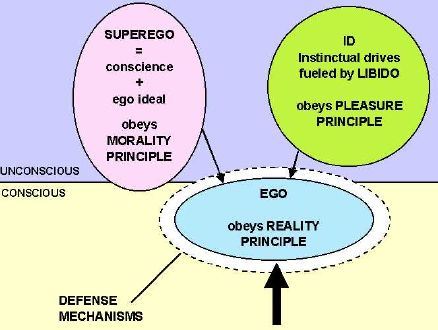Sigmund Freud developed Psychoanalytical theory to account for how the mind accomplishes the task of balancing the conflicting demands of instinct and social acceptability.
Freud’s discusses into following types:
1)
Structure of Personality
2)
Dynamics of Personality
3)
Development of Personality
4) Defense Mechanisms

1)
Structure of Personality explained in 2 models:
A)
Topographical Model (State of Consciousness):- Majority of what we experience in
our lives stored in 3 forms – Unconscious, Conscious & Sub-Conscious.
B) Dynamics or Structural Model: Freud (1923) saw the psyche structured into 3 parts – the Id, Ego & Superego., all developing at different stages in our lives.
2) Dynamics of Personality is based on 2 basic factors i.e. Love and Aggression, which drives an individual and help in shaping his/her personality.
3)
According to Freud, Children’s pleasure-seeking urges (governed
bu the Id) are focused on a different area of the body called an erogenous
zone, at each of the 5 stages of development:
a)
Oral (0-18 months of age)
b)
Anal (18 months to 3 years of age)
c)
Phallic (3-6 years of age)
d)
Latency (6-12 years of age) and
e) Genital (12+ years of age)
4)
Defense Mechanisms operate at an unconscious level and help ward
off unpleasant feelings (i.e. anxiety) or make good things feel better for the
individual. They are of following types: Repression, Projection, Displacement,
Sublimation, Denial, Regression, Rationalisation & Reaction formation.

No comments:
Post a Comment